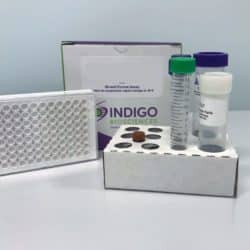Cookie preferences
This website uses cookies, which are necessary for the technical operation of the website and are always set. Other cookies, which increase the comfort when using this website, are used for direct advertising or to facilitate interaction with other websites and social networks, are only set with your consent.
Configuration
Technically required
These cookies are necessary for the basic functions of the shop.
"Allow all cookies" cookie
"Decline all cookies" cookie
CSRF token
Cookie preferences
Currency change
Customer-specific caching
FACT-Finder tracking
Individual prices
Selected shop
Session
Comfort functions
These cookies are used to make the shopping experience even more appealing, for example for the recognition of the visitor.
Note
Show the facebook fanpage in the right blod sidebar
Statistics & Tracking
Affiliate program
Conversion and usertracking via Google Tag Manager
Track device being used

| Item number | Size | Datasheet | Manual | SDS | Delivery time | Quantity | Price |
|---|---|---|---|---|---|---|---|
| IB-IB31202 | 384 wells (1 x 384 format assays) | - |
7 - 11 business days* |
3,803.00€
|
If you have any questions, please use our Contact Form.
You can also order by e-mail: info@biomol.com
Larger quantity required? Request bulk
You can also order by e-mail: info@biomol.com
Larger quantity required? Request bulk
This is an all-inclusive cell-based luciferase reporter assay kit targeting the the Human... more
Product information "ADRA1D Reporter Assay System (human)"
This is an all-inclusive cell-based luciferase reporter assay kit targeting the the Human Adrenoreceptor Alpha 1D (ADRA1D). INDIGO's ADRA1A reporter assay utilizes proprietary mammalian cells that have been engineered to provide constitutive expression of the ADRA1D. In addition to ADRA1D Reporter Cells, this kit provides two optimized media for use during cell culture and in diluting the user's test samples, a reference agonist, Luciferase Detection Reagent, and a cell culture-ready assay plate. The principal application of this assay is in the screening of test samples to quantify any functional activity, either agonist or antagonist, that they may exert against ADRA1D. This kit provides researchers with clear, reproducible results, exceptional cell viability post-thaw, and consistent results lot to lot. Kits must be stored at -80 °C. Do not store in liquid nitrogen. Note: reporter cells cannot be refrozen or maintained in extended culture. The adrenoreceptors (a.k.a. adrenergic receptors) mediate the action of the sympathetic nervous system and are activated in response to 'fight-or-flight' signals. They are divided into three types, adrenoreceptor alpha1-, alpha2-, and beta. Each type is further composed of three subtypes resulting in 9 different types (alpha1A, alpha1B, alpha1D, alpha2A, alpha2B, alpha2C, beta1, beta2, and beta3). Adrenoreceptors belong to the G-Protein-coupled receptor (GPCR) family. They all display the characteristic seven transmembrane helices, the extracellular loops which contribute to ligand binding, and the intracellular carboxy tail that associates with trimeric G proteins. All nine types of adrenoreceptors are activated by the same endogenous catecholamines (epinephrine and norepinephrine), however, the specificity of their responses depends on the G-proteins and effectors systems they associate with in a tissue and time specific manner. Adrenoreceptor alpha 1D (ADRA1D) signals through the Galphaq/11 family of G proteins. Upon binding to a catecholamine, ADRA1D undergoes a conformational change that triggers the activation of Galphaq/11 proteins via an exchange of GDP with GTP, followed by the activation of phospholipase C, the release of inositol triphosphate (IP3) which binds to its receptors on the endoplasmic reticulum and triggers the release of calcium and activation of the protein kinase C. ADRA1D is abundantly expressed in the brain3. ADRA1D is highly distributed in dentate nucleus neurons of the cerebellum. Major roles of ADRA1D include involvement in cardiovascular, urinary and central nervous system functions4. Although ADRA1D is closely related to ADRA1A and ADRA1B the precise physiological roles of ADRA1D have yet to be firmly established. Protein function: This alpha-adrenergic receptor mediates its effect through the influx of extracellular calcium. [The UniProt Consortium]
| Keywords: | ADRA1A, ADRA1D, Alpha-1D adrenoceptor, Alpha-1D adrenoreceptor, Alpha-1A adrenergic receptor, Alpha-adrenergic receptor 1a, Alpha-1D adrenergic receptor |
| Supplier: | Indigo Biosciences |
| Supplier-Nr: | IB31202 |
Properties
| Application: | Functional activity screening |
| Species reactivity: | human |
| Format: | Solid Phase |
Database Information
| KEGG ID : | K04137 | Matching products |
| UniProt ID : | P25100 | Matching products |
| Gene ID : | GeneID 146 | Matching products |
Handling & Safety
| Storage: | -80°C |
| Shipping: | -80°C (International: -80°C) |
Caution
Our products are for laboratory research use only: Not for administration to humans!
Our products are for laboratory research use only: Not for administration to humans!
Information about the product reference will follow.
more
You will get a certificate here
Viewed

